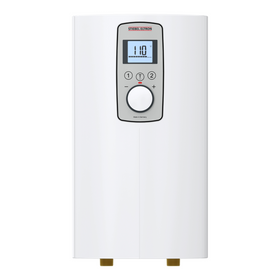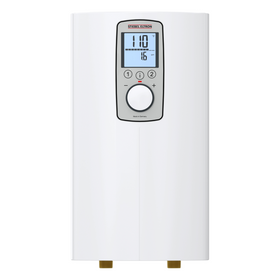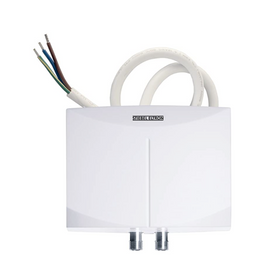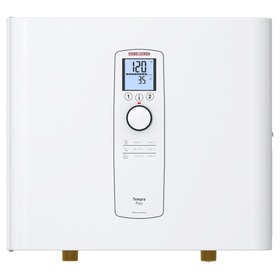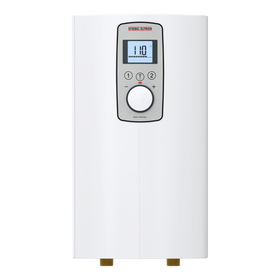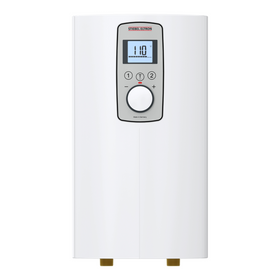
The Best Roof Types for Rainwater Collection
Last Updated: Apr 11, 2025Depending on your climate, the sound of rain can mean many things. If you're from an area where it falls abundantly, the sound of rain means a day trapped indoors. But if you're home is locked in a drought-stricken landscape, the sound of rain means a well-deserved drink for your thirsty plants.
Are you interested in setting up a collection system to harvest the free rainwater? Well, it's not difficult, with the first step being as easy as examining your roof and determining whether it is the right fit. The water from your roof can become the primary source of water for your plants, or it can leach potentially toxic chemicals into your system. So what are some of the standard roof types of water harvesting?
Table of Contents
- What Are the Best Roof Types For Rainwater Collection?
- Are Metal Roofs Good For Rainwater Collection?
- Are Tin Roofs Good For Rainwater Collection?
- Are Terracotta Roofs Good For Rainwater Collection?
- Are Wood Roofs Good For Rainwater Collection?
- Are Asphalt Shingle Roofs Good For Rainwater Collection?
- Can I Collect All the Rainwater From My Roof?
- How Do You Calculate Rainwater Collection on a Roof?
- What Are the Risks of Rainwater Collection?
- Can Roofing Material Be Toxic?
What Are the Best Roof Types For Rainwater Collection?
There are plenty of roof varieties that someone can use to collect rainwater. If you're not looking to replace your home roof just yet, research your specific roof and determine if it is safe for water collection. But if you're interested in making a change and want water harvesting to be on the agenda, then aluminum, steel, tin, and terracotta are a few of the most popular.

Are Metal Roofs Good For Rainwater Collection?
A corrugated metal roof is an excellent option for collecting rainwater. These roofs, particularly standing seam metal, can be a costly roofing choice but come with a high collection efficiency with a runoff coefficient of 95 percent or more. The runoff coefficient is the percentage of water that will run off a surface, taking into account the portion of water that will soak into it.
Metal roofs, typically coated in a galvanized external layer of zinc, are made to be rust-resistant. Though, be aware that galvanized materials can run the risk of leaching zinc into the rainwater. Be sure to test your roof water to ensure that the zinc levels are within acceptable limits (whether for yourself or your plants).
Homeowners should consider that some metal roofs run the possibility of collecting soil-related bacteria along their surface. As such, it is crucial to develop a cleaning routine for your roof to clear it of particulate collection in tough-to-get nooks.
Are Tin Roofs Good For Rainwater Collection?
Tin roofs are considered an excellent option for rainwater harvesting with a runoff coefficient of 95 percent. Though, be cautious if you are looking to collect water from your garage or shed roofed with tin.
Terne was a form of tinplating that involved coating a sheet of steel with lead and tin. This process lowered the cost of tin roofing but contained higher amounts of lead than other roofing options.
The composition of tern has changed in more recent years, utilizing a mixture of zinc and tin for its galvanizing properties. So before purchasing or using your tin roofing to collect water, be sure your roof is safe to use. If you are unsure, always test your water for safety. If contaminants, like lead, are present in your water, you should stop collecting them immediately.

Are Wood Roofs Good For Rainwater Collection?
Wooden roofs are some of the oldest roofing surfaces in the world. Different wood species dominate the market depending on your climate and give each roof type a unique and natural feel.
Unlike some other roof types, wooden surfaces tend to retain algae, moss, and mold. Now, some homeowners may like this look, but when it comes down to it, moss can deteriorate your wooden shakes or shingles. This process allows more water to seep into the wood and less water into your collection system.
Some locations spray chemicals on wooden roofs to prevent growth or even enable your roof to be more fire-resistant. As the rain flows off these surfaces, the contaminants are released, leaching into the system.
Even without additional chemicals, if your home has a wooden roof, it is often recommended to use your rainwater for irrigation only.
Can I Collect All the Rainwater From My Roof?
If we lived in a perfect world, all the water that rained down would leave your roof and collect in the rain barrel beneath. Unfortunately, this is not the case. But don't worry because the minimal water loss that occurs when collecting rainwater will happen no matter the surface type. This loss is because water can become trapped in the surface pores of your roof or against obstructions. Then, once the rain passes and the sun returns, this water evaporates, failing to make it into the system.

How Do You Calculate Rainwater Collection on a Roof?
When calculating your annual water discharge from your roof, you need to consider two significant factors. The first is the measure of your collection area, and the second being how much rain your home receives through the year. The third thing to consider is the runoff coefficient of your roof.
Use this calculation:
Roof Area x Annual Rainfall x Runoff Coefficient = Annual Discharge
But, if you are looking for a quick estimate for your roof without doing the math, here is a good rule of thumb. A standard assessment is that for every inch of rain across a 1,000 sq ft of roofing, the attached water collection system will harvest approximately 600 gallons of water. This fact shows that even with the most porous roof, a system collecting water is better than letting it escape the property.
Example Rainwater Collection Calculation
Say a home has an area of 186 square meters (m2) or (~2000 sq ft) and receives 1,078 mm (~42.4 in) of rain annually. This combination results in 201 cubic meters (m3) (~52969 gal (US)) of potential rain entering your collection system annually. Multiply this by the runoff coefficient of your roof (let's use a tin roof as an example) of 95 percent or, as written, 0.95. You then have a final annual discharge rate of 190 m3 (~50319 gal (US)). The runoff coefficient will vary by roof type, with this rate ranging between 5 and 10 percent in the annual totals.
What Are the Risks of Rainwater Collection?
While rainwater collection often aims to reduce the household water bill, it is essential to put one's health first. Always be sure to double-check that the roof you have or will be installing is safe for water collection. Even if you are not collecting for direct consumption, contaminated water can adversely affect your plants. And in worse-case scenarios, accumulate into the food that you harvest!
Can Roofing Material Be Toxic?
There are some roof varieties to be aware of when it comes to leaching contaminants into collected water.
Cedar shake and select wood shingles are often treated with chemicals to make them fire-resistant. These chemicals can leach into your water, making it unsafe for consumption.
Copper roofs look nice and are resistant to algae and moss, but the surface runs the risk of leaching into the water. Copper has the added benefit of acting as a natural herbicide which is excellent for resisting surface growth. Still, when using this to water the garden, this can cause numerous problems with your crops.
As you might expect, it is essential to keep lead products away from water systems as they can be toxic for both human and plant consumption.
Contaminants
Various pollutants could leach from your roof and end up in your rain barrels. These aren't including bulkier materials, such as twigs and leaves removed with a first flush system. However, a first flush system is also good at diverting any bird droppings or settled dust within the first few gallons of water away from your collection barrels.
Some of the most notable pollutants to be cautious of include algae, arsenic, chemicals, herbicides, and pesticides. These issues will vary by geographical locations, presenting unique challenges depending on your climate, ecosystem, or distance from polluting sources.
For example, roofs may be coated with a biocide meant to mitigate algae, mold, and moss in wet environments. In these areas, roofs topped with such chemicals are typically unsafe for consumption.
Always be sure to research what potential contaminants may be present on your roof in your climate before harvesting rainwater.
Tanner Sagouspe
Tanner Sagouspe has a Masters in Environmental Management and is a Permaculture Designer who promotes tackling the climate crisis at home.






